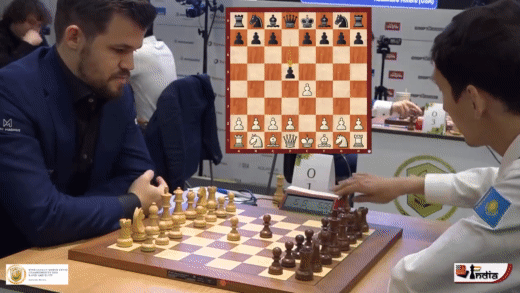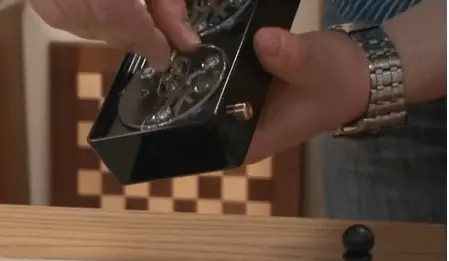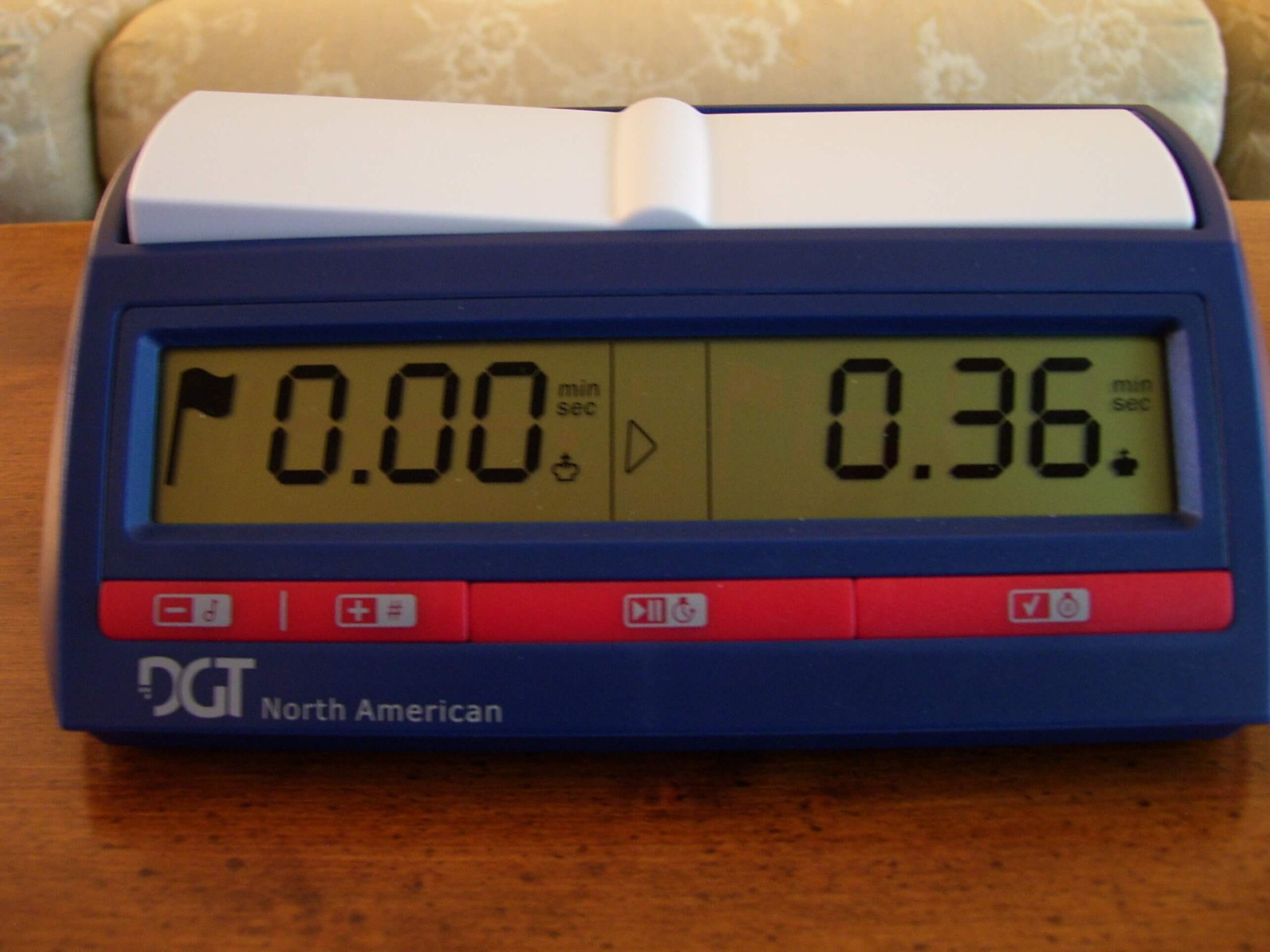Chess clocks add a level of excitement to the game of chess. Without them, games could last for days as there wouldn’t be any sense of urgency to make your moves.
Chess clocks come in different types and models. The two types of chess clocks are digital and analogue clocks. The more commonly used is the digital clock as it has more setting options to choose from. Anologue however is the more elegant of the two and dates back centuries ago.
Not to mention, analogue clocks are easier to use and to configure. Till this day, they are loved by many chess players across the world and will continue to be the favorite for some people.
In this article, we will discuss how to use the chess clock, including its functionality and how it works. This will include for both analogue and digital chess clocks. So with that said, let’s jump right in!
How Does The Chess Clock Work?
A chess clock is a device that has 2 clocks, one for each player. When it is your turn to move, your clock is running and ticking down, while your opponent’s clock is frozen. Once you make your move, you press the button on your side of the clock to stop the timer on your side. After which your opponenet’s clock will start to tick down. This goes on back and forth.
Players press their clock after making their move

You have a certain amount of total time to make all your moves in a chess game. If your clock runs out before you make your moves, then you lose the game provided that your opponent has sufficient material to checkmate or there is a theoretical checkmate in the position.
However, if you run out of time given that your opponent has insufficient material to checkmate, then the game is drawn.
How To Use An Analogue Chess Clock
By far the most popular choice of analogue chess clock is the classical. These clocks work pretty simple, and their functionality is quite similar to digital clocks.
Just like digital clocks, when a player makes his move, he presses his side of the analogue clock with the same hand he made his move. This will start his opponent’s clock.
When the opponent makes his move, he presses his side of the clock which would start the opposing side. If your opponent runs out of time, you indicate that his flag has fallen and claim victory as long as there is a possible checkmate on the board.
Pausing The Analogue Clock
When it comes to pausing the clock on an anlogue, things are a bit different. There is no button in the center of the analogue clock that would pause or start the timers.
To pause the clock on an anologue clock, you would have to level the two buttons so that their heights are the same.
Level the two buttons to pause the clock

Setting The Time On Anolgue Chess Clock
On an analogue clock, the timer usually runs out at 6 o clock. Therefore, you should consider this when choosing the time format for your chess game so you know what time to begin the clock. For example, if you are playing a 1 hour game for both sides, then the clock should start at 5 o clock so that it ends at 6:00. Other examples are:
- The 2 hour game starts at 4:00 o clock per side
- The 30 minute game is set at 5:30 per side
- The 15 minute game is set a 5:45 per side
- The 5 minutes blitz game is set at 5:55 per side
You will use the setting knob at the back of the clock to adust the hour hand and the minute hand.
The analogue clock comes with a red flag. When the time is close to expiring for one player, the red flag will rise as the minute hand approaches the top of the hour while pushing the red flag up.
When the time has fully expired, the red flag will fall as the minute hand reaches or moves away from the number 12 position. This is a clear visual indication that your time has run out.
The right clock will expire when the timer fully reaches the 6 o’ clock position as shown in the image below. (The red flag is seconds away from falling)

The analogue clock is loved by many despite the dominance of the digital clocks. The reason why digital clocks are popular is because they are more accurate, and has a wider variety of setting options.
For example, the dgt clock can add increments, whereas it’s not possible to do that on an analogue clock.
Winding The Clock & Turning The Knobs

The back of the clock should be wound counterclockwise on each side so that the springs are tightened. But be careful not to overwind the clock. Usually they are set just fine when you get them.
If you are going to set analogue clocks on a regular, it’s best to turn the knobs clockwise to keep the timer working in good condition.
I’ve played with many different clocks, but I find the classical analogue clocks to be the best. It’s very compact and easy to set unlike digital chess clocks. It’s excellent for beginners, or someone who doesn’t want to deal with digital clocks.
Well, there you have it. Now you know the basic operation of the analogue clock and how to use it. Let’s now move on to the digital chess clock.
How To Use A Digital Chess Clock
The operation of a digital chess clock is simple. After you’ve made your move, you press the button on your side of the clock to freeze your time while starting your opponent’s timer.
Your opponent does the same. He makes his move and then presses his side of the clock to start the opposing side. This goes back and forth throughout the game, until checkmate is on the board, the position is drawn, or either flag has fallen.
You can do a lot more functionality with a digital clock than an analogue chess clock.
With a digital clock you can set increments. Meaning, for every move you make, you get a certain amount of seconds added to your clock. Increments are good for saving time, especially when you don’t know how many moves you’re going to have to play in the match.
Therefore, if you are playing with a 20 second increment, then it would be harder for your clock to run out as you will always have that 20 seconds added to your clock each move you make. This is very convenient in blitz games when the time format is really short and your down to seconds on the clock.
When the time expires for a digital clock, you will hear a beeping sound, and an image of a blinking flag would appear on the side of the player’s clock whose time has ran out.
The clock on the left side has expired as indicated by the flag

Pausing The Digital Clock
Digital clocks come with a pause button in the center, unlike analogue clocks. Sometimes you have to contact the arbiter to make a claim, and you will need to pause the clock to do so.
The button in the center will pause the timer for both sides or start the clock for the side whose button is elevated.
Which Side Does The Clock Go On?
The side that the clock goes on will depend on who gets the black pieces. The player with the black pieces get to choose which side the clock goes on. And, in most cases, the player with the black pieces will put the clock on the right side.
This is because it is very convenient to have the clock on the right side closer to where your right hand is. Moreover, the rules of chess states that you must press the clock with the same hand you made your move with. That means you can’t make a move with your left hand, and then press the clock with your right hand.
Therefore, if you are a right handed player, then it makes perfect sense to have the clock on the right side closer to your right hand.
This is advantageous for the black player when the time is crunching down to a few seconds on both sides of the clock.
Setting The Time On Digital Clock
Once the batteries are inserted in the clock, a timer will display for both sides.
You can adjust the chess clock to your desired time format using the preset options at the back of the clock. This is the easiest and stress free method because you don’t have to manually adjust the clock for each side. The presets will do it automatically for you.
A good digital clock will come with 20 to 30 different presets to choose from. This is basically the different time formats/options you can choose from ranging from 5 minute games to 30 minute games etc.
A dgt 3000 chess clock comes with 30 different preset options.
To select a specific preset option you will press the plus button to increase the option or the minus button to decrease the option.
For example if option 4 is a 1 hour game, but on your clock you see option 1, then you should press the plus button 3 times until you reach option 4. Once you are done selecting the preset option, click the triangle button to save the preset.
Look at the back of the clock to see the different preset options

You have successfully set the timer on your digital chess clock. All that is left to do is select the side that will go first. The side that goes first will have his button of the clock elevated. Therefore, the timer will start on his side first when the play button is pressed.
To reset the game to the start, press the on and off button twice.
Here is is a helpful video that explains how to configure the dgt chess clock.
Configuring DGT North American Chess Clock
Configuring DGT 3000 chess clock


